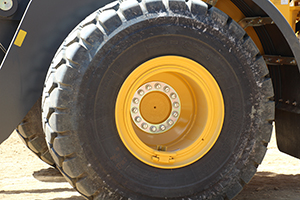
There is no doubt that the last five or six years have been tough in the construction industry. Spending is down by over 30%, and the recovery struggles to find traction. Fleet sizes have shrunk, and most folks are wondering, "How am I going to get my fleet back to its full working capacity?"
A friend and I were talking about this the other day, and he said, "We saw the downturn coming five years ago and sold most of our dump truck fleet. We kept six units and have been running them fairly consistently. So, we have got a solid core of six units in our fleet."
It seemed to make sense. Ever curious, I asked, "And how old are those units?"
"Oh," he said, "the youngest unit has 9,000 hours on it, the oldest about 14,000 hours and the average is a little over 10,000 hours."
True, there are six trucks in his fleet. Three can be working on one job, three can be working on a second job and quite a bit of work can get done. But the key question is this: What productive capacity remains in the fleet?
I like to use the concept of "productive hours remaining in stock." The arithmetic is easy; the answer often scary.
Let's assume that a new haul truck can be expected to run reliably and economically for 15,000 hours. If the average age of the fleet is 10,000 hours then, on average, each truck has 5,000 productive hours remaining in stock. If there are six units in the fleet then there are 30,000 productive haul truck hours remaining in stock. That comes to two trucks.
So now, the question is this: Does my friend have six trucks or two trucks?
Sure, he can provide sufficient trucks to support two crews and can get work done today. A more pressing question comes when you look to the future and realize that six trucks working 2,000 hours per year consume or burn up 12,000 truck-hours of stock each year. There will, therefore, be very left of my friend's fleet if nothing is added to the stock of haul truck hours in the next two or so years.
The key point is that you can reduce your fleet by reducing the number of units or by increasing the average age. During the recent recession, most companies have done both. This means that it is going to be very difficult to increase fleet size to handle increased volume and, at the same time, reduce fleet average age to prior and desirable levels.
As the recovery continues, it is going to be all hands on deck. Short-term rentals will play an important role as companies bootstrap their capital base. Leases and long-term rentals—with or without the option to purchase—will supplement loans and outright purchase agreements. Wise companies will use a portfolio of options to source and finance the restructuring of their fleet. The best will balance their portfolios to ensure access to available finance, lower cost and reduce risk.
Mike Vorster is president of CEMPCentral Inc., author of the book Construction Equipment Economics and a retired professor of Construction Engineering and Management at Virginia Tech. Regularly serving as a fleet management consultant to leading companies, you can reach him at mikev@cempcentral.com.



Post a comment to this article
Report Abusive Comment